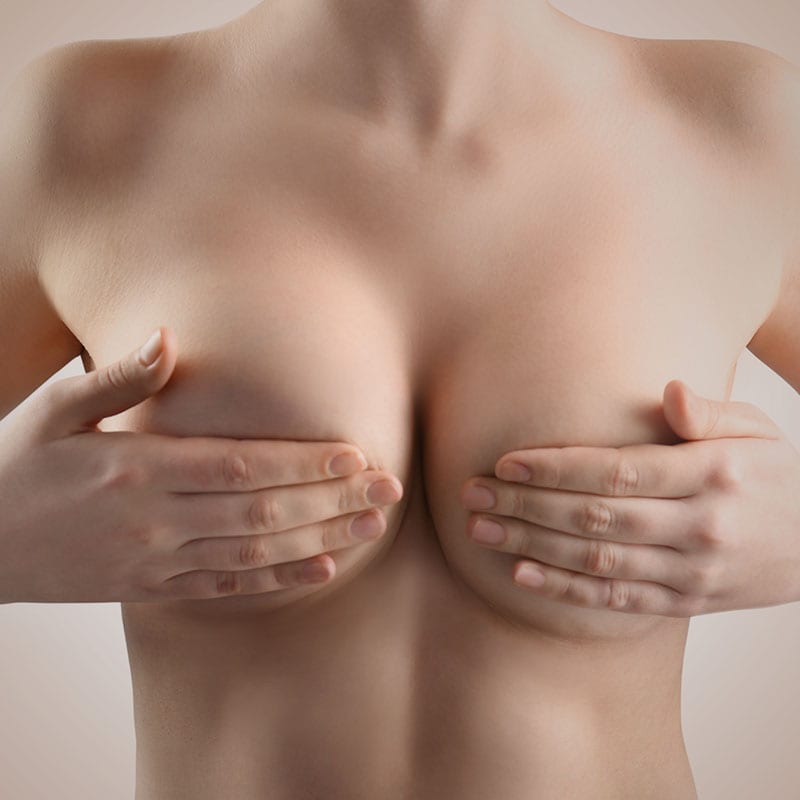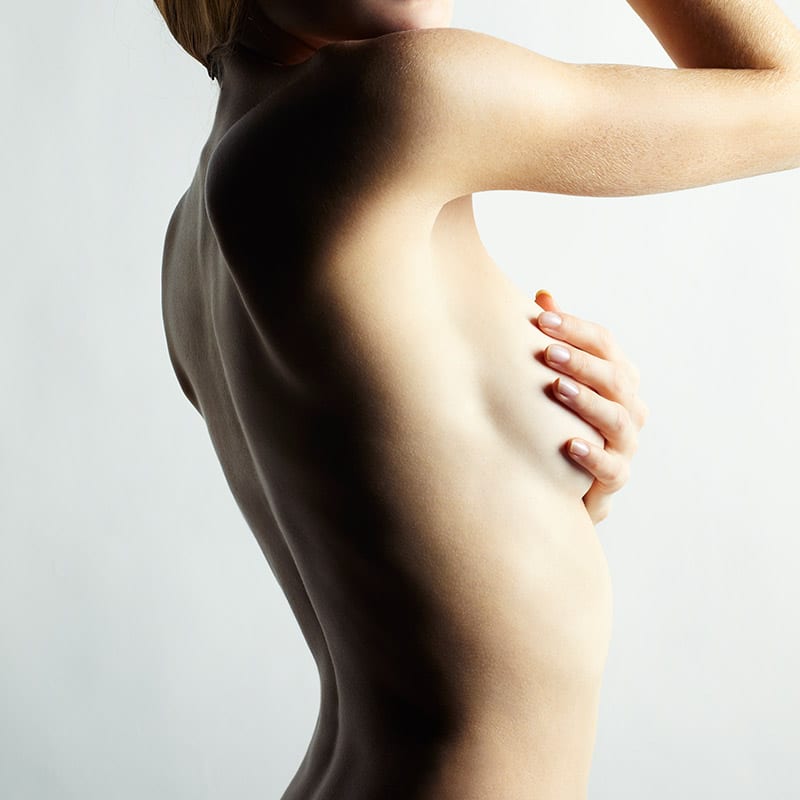Correction of Breast Asymmetry
A small degree of asymmetry in the size or shape of breasts is not at all uncommon among women of all ages. Occasionally this asymmetry is significant enough to cause aesthetic concerns or require surgical correction.
A variety of surgical techniques are available to address breast asymmetry.
The largest of the two breasts can be reduced if the patient prefers the shape and volume of the smaller breast. The breast reduction can be either in the form of liposuction alone, or a full breast reduction operation; or a combination of the two techniques (for more information see Breast Reduction).
Alternatively the smaller of the two breasts can be augmented to match the opposite.
Traditionally the usual method to augment the breast has been insertion of a silicone implant; in other words, unilateral breast augmentation (for more information see Breast Augmentation). The advantage of this technique is that correction of size mismatch can be achieved with one operation; however the drawback is that the shape and overall appearance of the augmented breast is almost invariably different to that of the opposite larger breast, and on some occasions a mastopexy (uplift) procedure is required in order to re-shape the opposite (larger) breast appropriately and achieve symmetry in shape and contour.
In more recent years the technique of fat grafting has revolutionized the surgical correction of breast asymmetry (for more information see Breast Fat Grafting). The fat graft can enhance specific areas of the breast, for example the upper pole, or the cleavage area, as required, and therefore can approximate better the shape and contour of the opposite (larger) breast. The most important factor is that unlike a silicone implant, the patient’s own fat is an autologous (patient’s own) material that will remain stable, will not deteriorate with time and usually will not require revisional operations in the future once it has integrated with the patient’s tissues.
Similar to any breast cosmetic procedure, a careful history taking and thorough examination of the breast is required prior to offering fat grafting in order to exclude any underlying breast problems. For women around or above the age of NHS breast screening (currently age 50) a pre-operative baseline mammogram is required.




